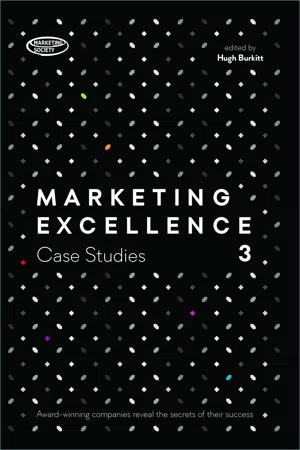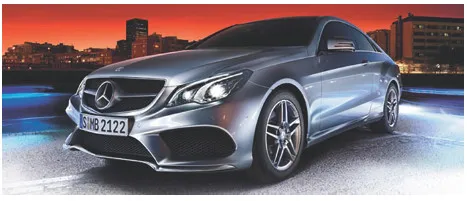
- 278 pages
- English
- ePUB (mobile friendly)
- Available on iOS & Android
About this book
These case studies from Marketing Excellence 3 showcase winners from The Marketing Society's Excellence Awards to celebrate and promote the contribution that great marketing makes to the commercial success of a business. Each of the 30 case studies features an award winner from 2012 to 2014 who employed strategies, tactics, tools and techniques worthy of recognition. As such, the case studies are ideal reading for both marketers and students looking to be inspired by the very best in marketing campaigns.The available case studies and related themes are as follows: Mercedes-Benz (Finding Consumer Insight)
Macmillan (Finding Consumer Insight)
O2 (Connecting with Customers)
Notcutts (Connecting with Customers)
EasyJet (Connecting with Customers)
Aviva (Connecting with Customers)
McDonald's (Communicating Brilliantly)
John Lewis (Communicating Brilliantly)
Sainsbury's (Communicating Brilliantly)
MINI (Communicating Brilliantly)
Galaxy (Communicating Brilliantly)
Burton's Biscuit Company (Mobilising the Organisation)
PwC (Mobilising the Organisation)
AMVBBDO (Mobilising the Organisation)
McLaren (Building Powerful New Brands)
Jack Daniel's Tennessee Honey (Building Powerful New Brands)
BT Sport (Building Powerful New Brands)
Hailo (Building Powerful New Brands)
The Famous Grouse (Building Global Brands)
Axe (Building Global Brands)
Foster's (Re-energising Long Established Brands)
British Airways (Re-energising Long Established Brands)
National Lottery (Re-energising Long Established Brands)
Jaguar (Re-energising Long Established Brands)
Unilever Small Cans (Marketing Sustainability)
The Fairtrade Foundation (Marketing Sustainability)
British Gas (Marketing Sustainability)
Sainsbury's and Channel 4 (Marketing to Make a Difference)
Paddy Power (Marketing to Make a Difference)
Depaul (Marketing to Make a Difference)
Frequently asked questions
- Essential is ideal for learners and professionals who enjoy exploring a wide range of subjects. Access the Essential Library with 800,000+ trusted titles and best-sellers across business, personal growth, and the humanities. Includes unlimited reading time and Standard Read Aloud voice.
- Complete: Perfect for advanced learners and researchers needing full, unrestricted access. Unlock 1.4M+ books across hundreds of subjects, including academic and specialized titles. The Complete Plan also includes advanced features like Premium Read Aloud and Research Assistant.
Please note we cannot support devices running on iOS 13 and Android 7 or earlier. Learn more about using the app.
Information
- Mercedes-Benz had to confront a brand image among the important 35-54 year-old target audience that saw it languishing in terms of its sporty and dynamic credentials.
- The revelation that the sound of the exhaust was what really got hearts racing led to a multi-platform campaign centred around an engaging sensory experience.
- The power of that insight saw the brand beating both its rivals in terms of sales for the first time in many years.
- Make 35-54 year olds reappraise the Mercedes-Benz E-Class and increase the level of enquiries (requests for test drives and brochures) from this group.
- Drive a 10% increase in Mercedes-Benz E-Class new car sales, year-on-year.

Table of contents
- Cover
- Imprint
- Table of contents
- Case Study 1: Mercedez Benz
- Case Study 2: Macmillan
- Case Study 3: O2
- Case Study 4: Notcutts
- Case Study 5: easyjet
- Case Study 6: Aviva
- Case Study 7: McDonald’s
- Case Study 8: John Lewis
- Case Study 9: Sainsbury’s
- Case Study 10: Mini
- Case Study 11: Galaxy
- Case Study 12: Burton’s Biscuits
- Case Study 13: PwC
- Case Study 14: AMVBBDO
- Case Study 15: McLaren
- Case Study 16: Jack Daniel’s
- Case Study 17: BT Sport
- Case Study 18: Hailo
- Case Study 19: The Famous Grouse
- Case Study 20: Axe
- Case Study 21: Foster’s
- Case Study 22: British Airways
- Case Study 23: National Lottery
- Case Study 24: Jaguar
- Case Study 25: Unilever
- Case Study 26: Fairtrade Foundation
- Case Study 27: British Gas
- Case Study 28: Sainsbury’s and Channel 4
- Case Study 29: Paddy Power
- Case Study 30: Depaul